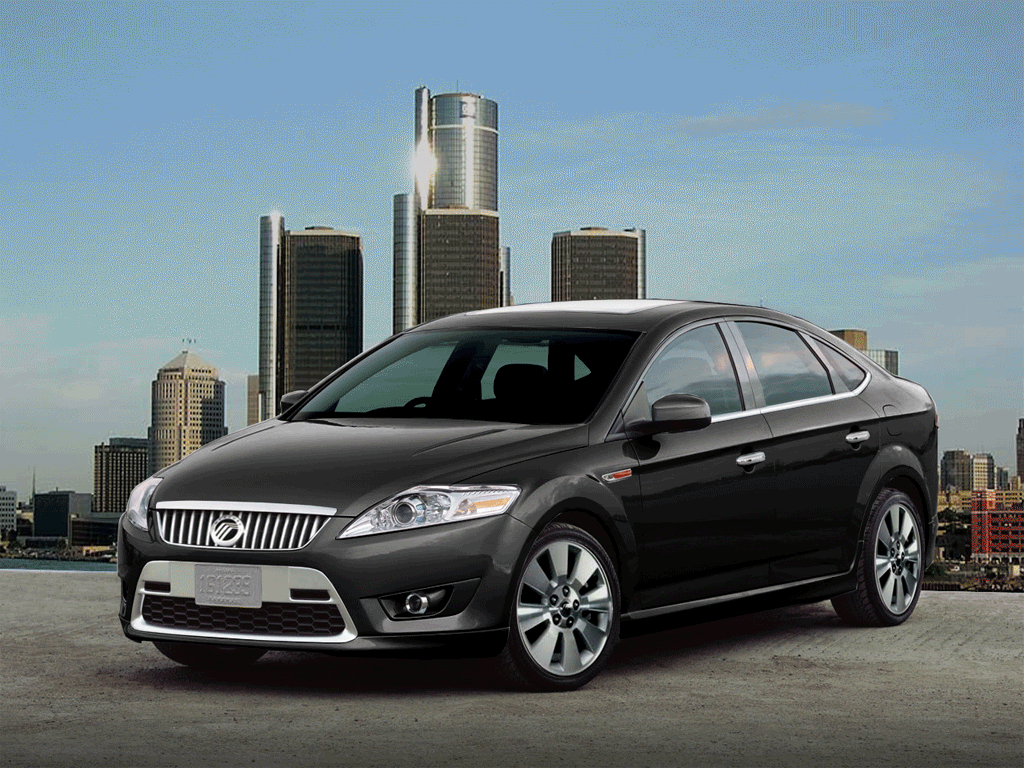Sticking With A Sure Thing
Part One: Great Success and Failure
In 1996, then CEO of Ford Motor Company, Alexander Trotman was looking at the sales projections for the planned 1998 release of the Australian market AU Falcon, when a simple question pooped in his head: “Why weren't we going to sell these in North America?” At first glance the idea of re-engineering the AU Falcon for Left-hand drive seemed an expensive prospect, but he reasoned, with Ford's massive sales in the US, it should at least cover the costs of development. Fortunately for Ford Motor Company, this was one of the best Decisions that could have been made.
By the 1998 Launch Date for the Falcon and it's American Siblings, extensive design and development work had been done. All of the five models possessed new and powerful engines. With the Crown Victoria, Falcon, and Grand Marquis having a standard Ford of Australia four-liter single over head cam straight six, producing a then-astounding 211 Horsepower and 263 pound-feet of Torque, and an Optional Windsor V8, which was standard on the Fairlane and Lincoln Town Car . The more expensive Lincoln Continental and Ford Fairlane LTD were equipped with 4.6 Liter dual over head cam Modular V8s producing 275 Horsepower and 275 pound-feet of torque, and the Lincoln Mark VIII's 290 horse InTech V8 was available as an option on both.
While the reception of the styling on the Falcon and Crown Victoria's “New Edge” styling was cool at best, the demand in North America for the sporty and powerful new models was so much that the factory in Wixom, Michigan that built the North American models had to add a second, and later on a third shift, just to keep pace with demand. With the Numbers tallied up from all the disparite Models, the Ford “Falcon Family” of models had outsold the previous best sellers, the Ford Taurus and Toyota Camry, with the Falcon Family having outsold the Camry by almost two thousand vehicles.
Unlike it's stable-mates, the Lincoln Navigator, released at the same time as the Continental and Town Car, was not a strong seller, in fact one dealer complained in a letter to Board Chairman Jacques Nasser and CEO Alexander Trotman; “The Navigator seems to serve no purpose beyond taking up space, as I have only sold four of the ten I ordered since the day they arrived, nearly three months ago now, while I have continuously sold out of Town Cars, Continentals and Grand Marquis, even at some points receiving offers of nearly three times the asking price for them.” The Navigator would only sell a grand total of Nine-hundred Vehicles in the 1998 Model Year, out of almost two thousand produced, while Lincoln would sell nearly thirty thousand Town Cars in the first six months of sales alone. The decision was clear- the Navigator would be not be produced for model year 1999.
For another of Ford's unsuccessful products, there was a chance at salvation. The third generation Ford Taurus SHO, plagued by engine troubles to an unusual degree, would receive a new engine. It's unique 3.4 liter dual overhead cam V8 would be replaced by a different Engine, the smaller and slightly more powerful 3 liter Jaguar AJ-30 V6 for the Mark 4 Taurus and SHO to be released for model year 2000, the AJ-30 would produce 240 horsepower in the SHO, an Improvement of five horsepower over the previous V8. This Lighter, more powerful engine would allow the Taurus to truly compete against it's competitors and win a place on Car and Drivers' 10 Best List for 2000, beating out the BMW 3 series and Audi A6.
Ford's new philosophy of commonality and performance paid off in other areas as well, with the Success of the “Generation 4.5” Mustang and Ford Cougar, a re-badged Mercury, for Model Year 1999, and Ford's New Compact for the New Millennium: the humble Focus, a rather surprising Titan of the automotive world and the culmination of the Ford 2000 Initiative which replaced three different models in North America alone.
Yes, In 2000 it seemed as if Ford had not only found unparraled success and profitability for an automaker, but that it had caught it's chief competiton flat-footed. Unfortunately the latter was somewhat untrue.
Interesting, but it has a number of serious problems that I can already see.
1) The Taurus and the Falcon are in different size classes, the Falcon is somewhat bigger. It's also more complex to assemble, being rear wheel drive. IMO the Falcon would work better on top of the range, above the Taurus.
2) The Navigator was successful because of CAFE laws (which were amended to exempt SUVs from them by Congress in 1994) and the fact that American cars universally got bigger and bigger over the 1990s. That also explains partly why the Mondeo/Contour, a best seller in Europe, flopped badly in North America. Removing the Navigator would require junking the CAFE laws, which would be a bitch to do at a time when most of the Big 3's profits came from large trucks and SUVs.
3) Replacing the Yamaha V8 with the AJ V6 is trading one troublesome no-torque aluminum engine for another. IMO, you'd be better sorting the problems out with the Yamaha 3.4 rather than junking it, and perhaps using it as a low-boost turbo to get more beans out of it at the bottom end of the rev range. And the Taurus is not gonna get to be a rival to the 3 Series or A6 by just changing the engine. Take it from somebody who has driven all of them, and a family member of a person who owned a '98 Taurus SHO.
